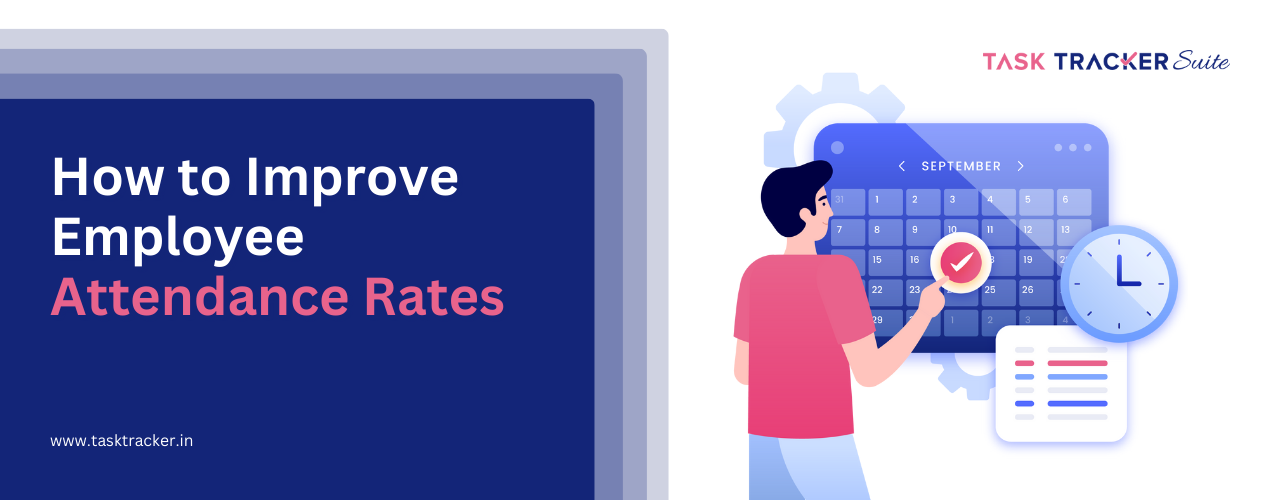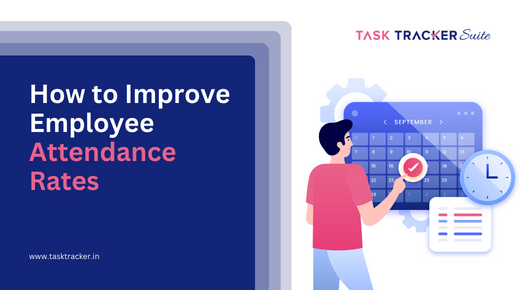
In the dynamic realm of business, maintaining a consistent and productive workforce is paramount. While occasional absences are understandable, chronic absenteeism can disrupt operations and diminish team morale. Addressing this challenge necessitates a multifaceted approach that combines effective tracking, transparent communication, robust employee engagement, and proactive health measures. In this blog, we will delve into several strategies aimed at mitigating absenteeism and cultivating a more engaged and dependable workforce.
1. Systematic Tracking of Staff Leave:
To tackle absenteeism effectively, you must first comprehend its scope. Establishing a structured process for recording employee absences provides essential insights for analysis and improvement. Incorporating advanced time and attendance software, such as Task Tracker, facilitates accurate record-keeping. Treating all employees impartially, irrespective of the nature of their absence, fosters an atmosphere of fairness within the organization.
2. Setting Clear Attendance Expectations:
Attendance norms are often shaped by the organizational culture. Defining these expectations in a comprehensive employee handbook ensures clarity and consistency. During the onboarding process, communicate these standards clearly, underscoring the role of attendance in achieving team objectives. While different workplaces may have varying degrees of flexibility, the key is aligning employee perceptions with the company’s cultural ethos.
3. Elevating Morale and Employee Engagement:
Persistent absenteeism is frequently intertwined with low morale. Employees who feel undervalued or disconnected are more likely to miss work. To counteract this, foster an environment of trust and appreciation. Acknowledge accomplishments, no matter how modest, and encourage open dialogue. By nurturing an inclusive and collaborative culture, you can mitigate the ‘us versus them’ mentality and augment employee engagement.
4. Championing Employee Wellbeing:
Addressing the underlying causes of absenteeism requires promoting employee wellbeing. While enforcing attendance during illness is ill-advised, initiatives promoting health can diminish the frequency of ailments. Implement stringent hygiene protocols, particularly in light of the lessons from the COVID-19 pandemic. Cultivate healthy habits by offering nutritious snacks and endorsing wellness initiatives.
5. Facilitating Open Communication:
Proactive communication is pivotal in preventing sporadic absenteeism from snowballing into a persistent issue. Instead of resorting to punitive measures, establish transparent communication channels with absent employees. Demonstrate empathy and seek to comprehend their circumstances. Extend support and flexibility by adjusting work hours or responsibilities as appropriate. Regular check-ins during absences and return-to-work meetings contribute to smoother transitions back into the work routine.
6. Empowering Supervisor Training:
Supervisors wield considerable influence in managing attendance and fostering engagement. Regular training sessions on attendance policies, disciplinary protocols, and effective communication empower them to handle absenteeism cases adeptly and sensitively. Additionally, providing training to identify signs of burnout and stress empowers supervisors to address underlying concerns promptly.
Optimizing Attendance with Task Tracker:
Elevate your attendance management with Task Tracker’s powerful features. Geolocation tracking ensures accurate clock-ins and outs, while real-time updates keep you informed instantly. Customise reports to analyze attendance patterns, and access data conveniently via the mobile-friendly interface. Integration capabilities streamline data transfer, and robust security measures protect sensitive information. With Task Tracker, attendance management becomes efficient, transparent, and hassle-free, allowing you to focus on your business’s growth and success.
Bottom line:
Enhancing employee attendance and nurturing engagement demands a comprehensive strategy that encompasses systematic tracking, well-defined expectations, boosted morale, employee wellbeing initiatives, transparent communication, and supervisor training. A synthesis of these approaches creates an environment where absenteeism is an exception rather than the rule. Investing in these endeavours bolsters operational efficiency, while also fostering a culture of trust, respect, and cooperation among your workforce. Keep in mind that there is no universal panacea; success hinges on implementing a diverse array of approaches that resonate with the distinct dynamics of your organization.


Leave a Reply